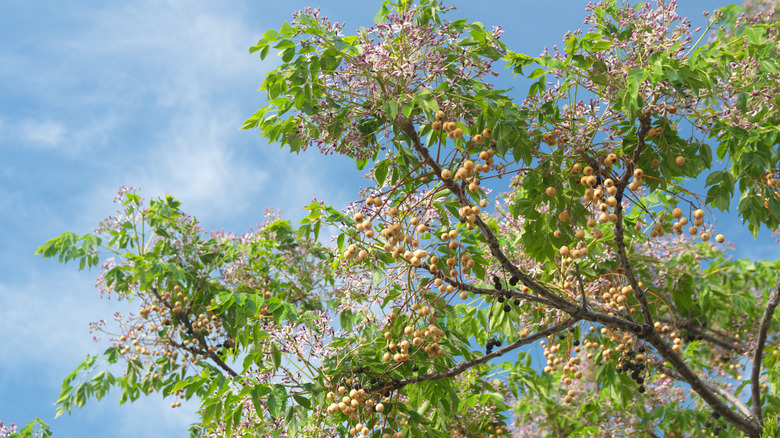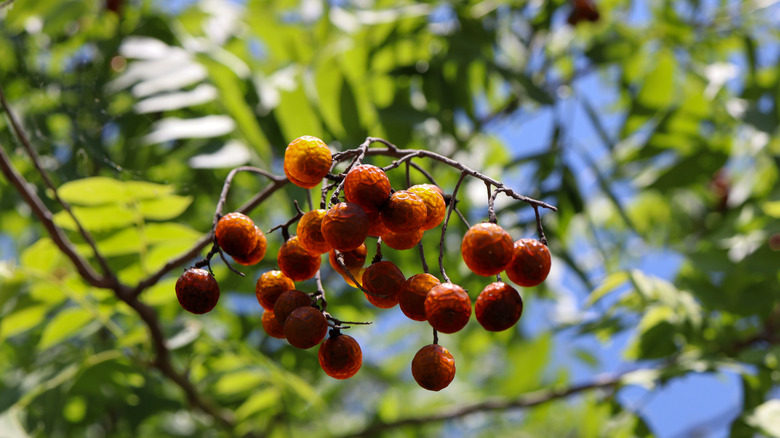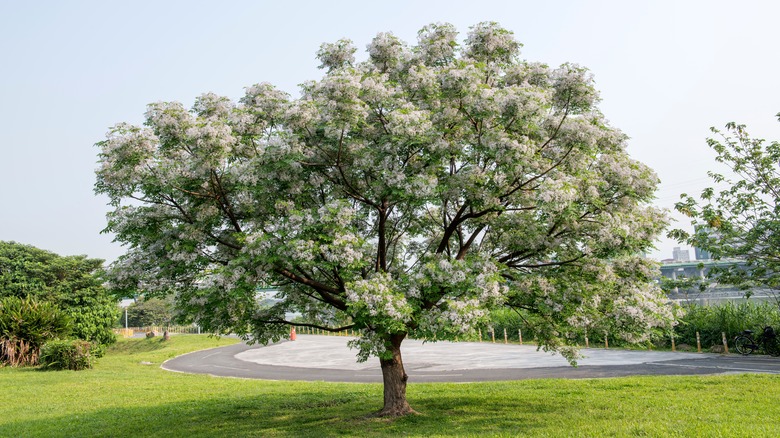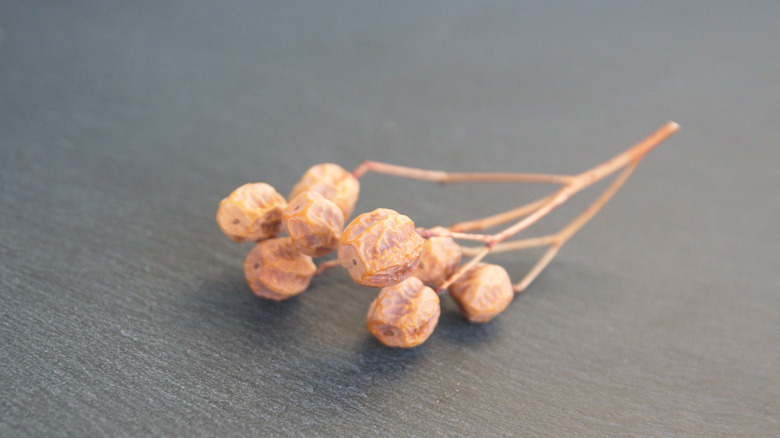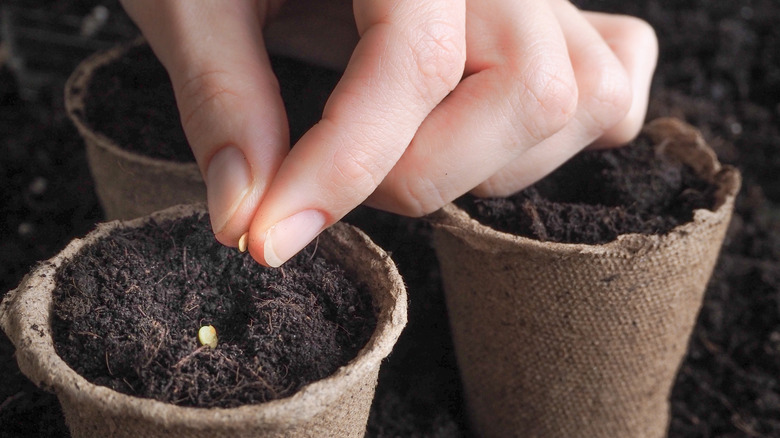How To Care For A Chinaberry Tree
Melia azedarach, known as the chinaberry tree, is a species of deciduous tree native to India, Southeast Asia, and Australia. It's mainly harvested for timber. Fully grown, the chinaberry tree usually stands between 20 and 40 feet tall, but it can grow up to 150 feet in special conditions. The tree bears a small, light-yellow fruit during the winter. It tends to have expansive foliage, with leaves that can grow up to 20 inches. For this reason, people have been planting it to shade their properties for years. Chinaberry trees live between 40 and 150 years.
The chinaberry tree was introduced to the southern U.S. as a decorative plant but is now considered an invasive species by some environmental groups, like the Texas Invasive Species Institute. Its shallow roots are known to be destructive to septic systems, and its branches tend to be weak and cause damage during storms. They have a fast growth and reproduction rate, and can lower biodiversity in areas where they compete with native trees.
Alternatively, the chinaberry tree's fast growth and reproduction rates have been put to use in other parts of the world. According to the Royal Botanic Garden, Kew, the tree has been used in Thailand to regenerate depleted forests. Each chinaberry fruit contains up to five seeds, and when they fall they can quickly produce new trees. If you decide that planting a chinaberry tree would be beneficial to your property with all things considered, read the guide below to get started.
How to use a chinaberry tree in garden
As mentioned before, chinaberry trees have been planted in gardens for years for their umbrella-like canopies, though their usage in the U.S. has declined in recent years because they can be damaging and invasive. Since the chinaberry tree is considered an invasive species, there are a few factors to consider before planting one in your garden.
You should first check and see if growing the tree is advisable in your area. Some local governments may not allow planting chinaberries. You should also consider keeping it away from other plants, especially those that do not do well in alkaline soil. According to Leafy Place, chinaberry leaf litter tends to create a more alkaline environment in the soil. Many of the trees native to the southern U.S. do much better in acidic soils, so neighboring a chinaberry tree can be detrimental to their growth. They are generally allelopathic, meaning they inhibit the growth of other plants nearby. If you decide you want to have a chinaberry tree in your garden, keeping it isolated or around other chinaberries is probably your best option.
How to grow a chinaberry tree
Before planting your chinaberry tree, make sure you are in an environment that will promote healthy growth. Chinaberries do best in USDA hardiness zones 7 through 11. They grow well in any type of soil as long as it has proper drainage.
According to the Tampa Bay Times, you can grow your own chinaberry tree by collecting seeds from fallen leaves. After collecting the seeds, plant them into a pot or directly into the ground. They also note that you can start with cuttings from the end of a chinaberry branch and plant them into soil. The cuttings will begin to root in about four to eight weeks. Chinaberry saplings are also sold in nurseries.
Plant your seeds, saplings, or cuttings in an area that will receive at least six hours of sunlight per day. Water once a week during periods with little rainfall in the spring and summer, or whenever the top 2 inches of soil become completely dry. Chinaberries are dormant in the winter and do not require watering. Fertilizing is not necessary unless your tree is showing signs of nutrient deficiency.
How to care for a chinaberry tree
Mature chinaberry trees are more tolerant to a variety of conditions — including frost, heat, and drought — than growing chinaberry trees. Once your tree has reached full maturity, it will require less maintenance. It will still require at least six hours of sunlight per day. Ideal temperatures for the tree are between about 75 to 95 degrees Fahrenheit. Too much moisture can cause root rot, poor growth, and pale leaves. Make sure your soil gets proper drainage and does not experience waterlogging.
Additionally, check for yellowing leaves. This could be a sign of a mineral or nutrient deficiency. A lack of nitrogen, phosphorous, or potassium can affect your tree's growth. If this is the case, a fertilizer may be beneficial. Since chinaberry trees are prone to breakage, it is important to examine for weak branches, especially if your tree is growing near any buildings. Remove all root shoots as soon as they appear.
Leafy Place notes that in their native region of Southeast Asia, white cedar moth caterpillars can be damaging to the tree, but pests do not typically affect chinaberry trees in the United States.
Are chinaberry trees toxic?
All parts of the chinaberry tree, especially the fruit, are toxic to humans and most mammals, including cats, dogs, and livestock. Keep pets and children away from the trees, as consumption can be fatal. The Australian National Herbarium states consuming as few as six to eight fruits can be fatal to humans. Signs of chinaberry poisoning include diarrhea, vomiting, difficulty breathing, and paralysis. The onset of these symptoms will occur within a few hours after ingestion. Contact a doctor or veterinarian right away if a pet or someone you know has consumed chinaberry fruit, bark, leaves, or flowers.
The chinaberry fruit is not fatal to birds, and many species enjoy it. However, eating the seeds in large quantities has been known to make birds exhibit drunken behavior, as noted by The Washington Post. Birds' consumption of chinaberries play a big role in their propagation. They tend to eat the fruit and then spread the seeds through their droppings.
How to repot a chinaberry tree
If you planted your seeds in a pot or bought a sapling in a container, you will need to make sure that the container is large enough for the fast-growing chinaberry. If you notice roots wrapping around themselves or growing out the pot, move the sapling to a larger pot or transfer it to a garden. Eventually, chinaberry trees will need to be moved to a garden so that they have ample room to grow.
To repot or relocate a chinaberry tree, first you will need to remove the sapling from its original pot, per Gardening Know How. Loosen the soil and gently take it out. You can do this by turning the pot on its side and gently rolling it back and forth with your hands. Once out of the pot, continue to loosen the soil around the roots while being sure to keep them intact. You do not need to remove all of the soil, just enough to give the roots more mobility.
If you are moving your chinaberry sapling to a larger pot, fill the pot 3/4 of the way with fresh soil. Then take the sapling and place it on the fresh soil. Level out the top with additional soil if needed. Finally, water the newly-potted sapling.
